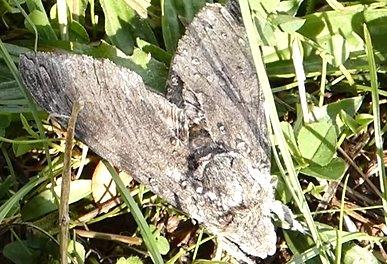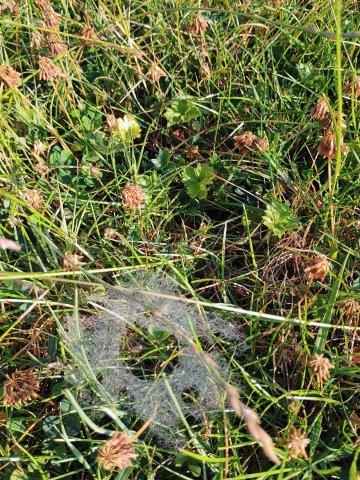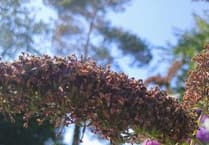By Hazel Wedlake
AFTER my precious sighting of the Jersey Tiger Moth and a Humming Bird Hawk moth on the Buddlia in mid August, numbers of Peacocks, Red Admirals and Commas decreased significantly but Large White and Small White continued to dominate. The top five species in the National Count were Large White, Small White, Gatekeeper,Red Admiral and Meadow Brown.

I’d wearied of butterfly chasing by September, and turned my attention to the birds coming to the garden feeder in an effort to record numbers for the British Trust for Ornithology. Plenty of Blue Tits and Great tits, Green finch and Chaffinch and a bullfinch. The woodpeckers were present earlier in the year.
Someone else always on the look out for anything edible is of course the Labrador. End of season slightly tough runner beans are very acceptable, as are fresh blackberries harvested from the hedge.
As we walk up the road I hear her crunching up fallen hazelnuts. Running her nose over them before selecting just one or two.
On fine dewy mornings, hundreds of cobwebs with hollow centres covered the parched fields.
I read that these are funnel webs which of course act as a hiding place for the spider, which waits to ambush prey that gets caught on the surrounding sheet of tripwires.

I was intrigued by another observation — a 1cm high tunnel of fresh soil across the farm track.
Where the rain had broken it in places, I could see a procession of brown ants making their way up the field. I intended to photograph the next day, but it was washed away in a storm. The following morning it had been reengineered, but this time a farm vehicle drove over it just as I approached. Meanwhile our local lake remained at the lowest level we’d ever seen. The original landscape revealed to show a road and little stone bridge. The village of Moreton was demolished and the valley flooded to create a reservoir in the 1950’s. There was excitement at the lake in the bird watching fraternity as a White Tailed Eagle re-introduced in the North a few years ago, had been spotted for the first time in the area. I couldn’t compete with that, but I did see our regular white Egret perched in the trees outside the kitchen window, attracted by activity at the bird feeder.
Some other wildlife I saw, but unfortunately deceased were a Grass snake, run over on the road, but at least we know we have some in the area, a baby bat mysteriously appeared in our under stairs cupboard, and in the field, a large grey moth with swept back wings about an inch and a half long. We believe it to be a Convolvulus hawkmoth which would make sense as its caterpillars feed on the Convolvulus (Bindweed) flowers of which there were hundreds in the field. It is a migrant moth from southern Europe that appears in the UK from late summer to autumn in a good weather year.





Comments
This article has no comments yet. Be the first to leave a comment.